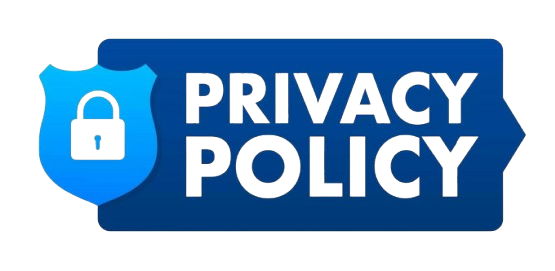What Happens If You Bill Before Credentialing Approval

Blog Outline
- Introduction: Why This Topic Matters
- Understanding the Credentialing and Enrollment Timeline
- What Happens If You Bill Before Credentialing Approval
- Retroactive Billing After Credentialing Approval
- Compliance and Legal Risks of Early Billing
- Financial and Operational Impact
- Temporary Billing Options During Credentialing Delays
- How to Prevent Lost Revenue During Credentialing
- Conclusion
- Frequently Asked Questions
Introduction: Why This Topic Matters
Every healthcare provider wants to start seeing patients as soon as possible — but when it comes to billing, timing can make or break compliance. One of the most common and costly mistakes new or expanding practices make is submitting claims before credentialing approval.
At first glance, it may seem harmless: you have submitted your credentialing application, your National Provider Identifier (NPI) is ready, and payers have your information. Why not start billing now to keep cash flow moving? Unfortunately, this decision can trigger denials, reimbursement delays, and even compliance risks that affect your future payer relationships.
Billing before credentialing approval means submitting claims to insurance payers before your provider enrollment or network participation has been fully approved. In other words, the payer has not yet recognized you as an authorized in-network or participating provider. Because of this, your claims are often rejected automatically or flagged for review — even if the services were medically necessary and properly documented.
The result?
- Lost revenue
- Delayed payments
- Potential audit exposure if billing is handled incorrectly
- Worse, in some cases, early billing can be viewed as a misrepresentation of provider status — something payers and regulatory bodies like CMS take very seriously.
Understanding the Credentialing and Enrollment Timeline
Credentialing and payer enrollment form the foundation of every compliant billing relationship. Before a healthcare provider can legally bill an insurance payer, they must complete a structured approval process that verifies qualifications, licensing, and participation in a payer’s network.
At its core, the provider enrollment and contracting process ensures that clinicians meet payer standards and state or federal regulations before reimbursement begins. This includes confirming education, licensure, malpractice history, and practice details. Once verification is complete, the payer contracts with the provider, formally authorizing them to deliver covered services to insured patients.
However, this process isn’t instant. The credentialing timeline and payer onboarding period can range from 60 to 120 days — or even longer if documents, signatures, or verifications are delayed. Each payer has its own timeline and requirements, which can create bottlenecks for new providers eager to begin billing.
During this time, many practices assume that submission of a credentialing application equals provisional approval. Unfortunately, that’s not the case. Payers will not accept claims for reimbursement until they issue formal confirmation, often with an effective date of participation. Submitting claims before that date leads to automatic denials or unpaid services, even if the provider’s credentialing is approved later.
The payer network participation approval date acts as the true “start line” for billing eligibility. This date determines which claims can be paid and which fall outside the reimbursement window. For example, if a provider’s effective date is May 1 but they billed for sessions in March, those earlier claims would likely be denied unless the payer allows retroactive billing — which is rare and strictly controlled.
Understanding these credentialing timelines isn’t just administrative — it’s financial protection. By coordinating enrollment dates, service delivery, and billing start points, practices can avoid preventable denials, compliance flags, and the stressful process of chasing unpaid claims after the fact.
Credentialing, in essence, sets the legal and financial foundation for billing. Knowing when your approval begins — and how to align it with operational workflows — helps ensure every service you provide is billable, compliant, and reimbursable from day one
What Happens If You Bill Before Credentialing Approval
When a provider submits claims before credentialing approval, the payer’s system flags those claims as coming from a non-participating provider. Because no active provider contract exists in the payer database, those claims are usually denied automatically — even if the services were valid and medically necessary.
From a revenue perspective, this can quickly turn into a financial bottleneck. Providers assume that because their credentialing application is “in process,” payers will eventually honor those claims retroactively. But in reality, most payers reimburse only from the date the credentialing approval becomes active, not from the date of service.
For instance, imagine a behavioral health clinician who begins sessions under a new practice in March, but their credentialing approval is finalized in June. Any claims submitted between March and May would be rejected or marked as non-payable because the provider wasn’t yet recognized as in-network.
Submitting billing prior to credentialing approval can also cause system conflicts at the clearinghouse or payer level. Claims tied to an unapproved NPI or Tax ID combination might be rejected outright, delaying subsequent valid claims once credentialing is complete. These early submissions can even create duplicate record flags, complicating future payments or causing unnecessary audits.
The result is not just a denial — it’s a workflow disruption. Providers may need to manually resubmit claims, appeal denials, or request retroactive payment once approval is granted. Each of these steps adds administrative time and increases the chance of missed reimbursement due to timely filing limits.
Beyond revenue loss, there’s also a compliance dimension. Billing for services while credentialing is pending may be viewed as misrepresentation of provider status, particularly if the claim implies network participation. Payers and oversight bodies often interpret this as a violation of network integrity or billing transparency requirements.
Retroactive Billing After Credentialing Approval
Once credentialing is complete, many providers hope to recover lost revenue for services rendered during the waiting period. This is where retroactive billing after credentialing approval comes into play — a process that allows certain payers to honor claims for dates of service before the official approval date, under strict conditions.
Retroactive billing is not guaranteed. Each payer has its own retroactive claims submission policy, typically defined in its provider handbook or participation agreement. Some payers — like Medicare, Medicaid, and specific commercial carriers — allow backdated claims if the credentialing application was submitted before the date of service and all documentation requirements were met. Others strictly enforce their effective date as the billing start line, rejecting any claims prior to approval.
Understanding the credentialing effective date and reimbursement policy for each payer is essential. This date acts as the official authorization for billing. For instance, if a payer issues an approval letter stating “effective date: July 1,” then only services rendered on or after July 1 are billable, unless the payer explicitly provides retroactive coverage. Claims dated before that are automatically ineligible — even if credentialing was pending at the time.
Providers seeking backdated claims after credentialing must typically submit a written request with supporting documentation. This includes proof of application submission date, credentialing acknowledgment letters, and detailed records of services provided. Many payers require these claims to be submitted within a short window — often 30–90 days from the approval date — or they’re considered void under timely filing limits.
It’s also worth noting that retroactive reimbursement is treated as an exception, not a right. Payers approve such requests selectively, often under specific conditions such as system delays, administrative errors, or network access shortages. Providers should never assume retroactive payment will be automatic.
To streamline the process, it’s best to maintain a payer-specific credentialing tracker noting application dates, approval notices, and effective dates. This ensures that retroactive opportunities are identified and acted upon promptly, without breaching filing deadlines or compliance boundaries.
When handled correctly, retroactive billing can recover lost revenue while maintaining compliance — but when mismanaged, it can trigger payer disputes or audits. As a rule, practices should always confirm eligibility for backdated reimbursement before submitting any claims tied to pending credentialing
Compliance and Legal Risks of Early Billing
When a provider bills before receiving payer approval, the risk extends beyond denials — it can cross into compliance territory. Many clinicians assume payers will simply hold claims until credentialing is finalized, but most insurers treat premature submissions as violations of billing integrity standards.
The compliance risks of billing before approval center on misrepresentation. Submitting claims under the assumption of network participation — when it has not yet been granted — can be interpreted as misleading payer systems. Even if unintentional, these actions raise red flags during audits and can trigger payer sanctions, contract termination, or federal investigation under the False Claims Act.
According to payer rules for non-participating provider billing, any provider who submits claims prior to credentialing approval is considered out-of-network. This means that the claim is either rejected or processed at non-participating rates, often leaving the patient responsible for the difference. Worse, if the provider later becomes credentialed, these early claims cannot be “corrected” by simply resubmitting — they remain tied to an unapproved status and violate effective date compliance.
One of the most serious compliance breaches occurs when practices attempt billing under another provider’s NPI to bypass credentialing delays. While this may appear to be a temporary workaround, it directly violates CMS and OIG rules. If discovered, it may be classified as fraudulent billing — especially when claims imply that services were rendered by a credentialed provider. Payers can recoup payments, issue penalties, or refer the case for investigation.
Another hidden issue is credentialing approval fraud risk, which arises when providers falsify or predate credentialing effective dates to match earlier claims. Even minor data inconsistencies (like retroactively entered approval dates) can appear as deliberate misrepresentation during payer audits.
Compliance risks aren’t limited to federal scrutiny. Commercial payers are increasingly using advanced algorithms to detect provider-level discrepancies between credentialing and billing timelines. These systems can automatically flag inconsistencies, leading to payment holds, audit requests, or even network termination.
For healthcare organizations, compliance with credentialing and billing timelines isn’t optional — it’s a safeguard. Billing teams should coordinate closely with credentialing departments to confirm effective dates before submission, and document every communication with payers regarding approval status. This not only protects revenue but also demonstrates good-faith adherence to payer policy and federal guidelines.


In short, the cost of early billing isn’t just lost reimbursement — it’s the potential erosion of payer trust and legal exposure. Staying within credentialing compliance parameters is far less costly than correcting violations later under audit conditions.
Financial and Operational Impact
Credentialing delays don’t just slow administrative progress — they create measurable losses in both revenue and efficiency. When claims can’t be submitted or reimbursed until approval, the entire revenue cycle grinds to a halt.
The credentialing delay reimbursement impact is often underestimated. Every week without payer approval represents lost income, mounting receivables, and reduced liquidity for the practice. For smaller or newly established clinics, this delay can jeopardize payroll, rent, and vendor payments.
From an operational standpoint, billing teams face added burdens. Staff spend hours tracking application statuses, managing rejected claims, and resubmitting invoices once approval is finalized. These backlogged claims contribute to longer reimbursement timelines and higher administrative costs — eroding overall productivity.
The revenue risk during credentialing delays extends beyond immediate cashflow concerns. When providers repeatedly bill before approval or submit incomplete data, payers often flag the practice for “billing irregularities.” Over time, this can damage the provider’s standing with insurers, delay future credentialing renewals, and even prompt pre-payment reviews.
Financial recovery requires coordination between credentialing and billing teams. Using shared dashboards, credentialing trackers, and automated payer-status updates helps practices stay informed about pending applications — ensuring billing begins only when participation is confirmed.
In short, credentialing delays don’t just impact compliance; they challenge the financial stability of a healthcare organization. By aligning billing workflows with credentialing timelines, providers can safeguard both their cash flow and payer relationships — maintaining operational efficiency even during administrative slowdowns
Temporary Billing Options During Credentialing Delays
When payer credentialing delays stall reimbursement, providers often look for safe, compliant ways to keep cash flow moving. The key is to use billing alternatives that maintain transparency with patients and insurers while staying within payer and CMS guidelines.
Locum Tenens Billing
One of the most common and compliant methods is locum tenens billing, which allows a temporary substitute provider to deliver and bill for services under another credentialed provider’s NPI. This option is typically used when a new clinician is awaiting approval or a credentialed provider is temporarily unavailable. However, its use must meet CMS and payer criteria — including strict time limits and documentation confirming the substitute provider’s role.
Superbill Model
Another practical approach is the superbill model, where the practice provides patients with detailed invoices they can submit directly to their insurance carrier for reimbursement. While this method delays practice income, it allows services to continue uninterrupted without risking non-compliant claims. Patients pay upfront and later seek partial reimbursement from their payer.
Out-of-Network or Self-pay Billing,
Some practices also explore out-of-network or self-pay billing, provided clear financial consent is obtained. Transparency is crucial here — patients should be informed that services will not be billed through insurance until credentialing is finalized. This approach can maintain operational continuity, especially for behavioral health or counseling practices with recurring appointments.
Credentialing Pending Billing Options
Additionally, billing teams can implement credentialing pending billing options, such as flagging unsubmitted claims in their EHR or practice management system until payer approval arrives. Once credentialing is confirmed, these claims can be batch-submitted within the payer’s timely filing window.
When applied properly, temporary billing solutions during credentialing safeguard both compliance and revenue. The key is communication — between providers, billing teams, and patients. Every temporary billing decision should be documented, traceable, and aligned with payer-specific participation policies.
While these solutions can sustain operations temporarily, they should never replace proper credentialing. A proactive strategy — beginning credentialing 90 days before patient care starts — remains the most reliable way to prevent reimbursement gaps.
How to Prevent Lost Revenue During Credentialing
Even the most efficient practices can lose revenue if credentialing and billing operations aren’t synchronized. Preventing this loss requires proactive planning, communication, and systemized monitoring — long before a single claim is submitted.
💡Building a provider credentialing tracking workflow is one of the most effective ways to keep every payer application visible and accountable. This internal tracker should record submission dates, payer contacts, approval status, and effective dates. When integrated with your billing system, it ensures that no claim is filed before credentialing is finalized, reducing denials and rework.
💡 Close coordination between credentialing and billing teams is also essential. Credentialing and billing coordination means maintaining shared access to payer updates, approval notifications, and network effective dates. Many claim denials occur simply because billing staff are unaware that credentialing is still pending. Regular status meetings or automated alerts can eliminate this gap entirely.
💡Technology plays an equally important role. Practice management systems and EHRs can automate reminders for credentialing renewals, track payer timelines, and hold claims until credentialing is complete. These digital safeguards minimize manual errors and prevent non-compliant billing submissions.
💡Finally, every provider should have a payer readiness checklist before billing begins. This should confirm:
- Credentialing approval effective date
- Payer ID and NPI linkage verification
- Tax ID and location validation
- Enrollment completion for all contracted payers
When combined, these measures transform credentialing from a reactive task into a proactive revenue protection process. Practices that implement credentialing dashboards and RCM-integrated workflows see fewer denials, faster reimbursement, and stronger payer relationships.
Ultimately, preventing lost revenue during credentialing isn’t about working faster — it’s about working smarter. By aligning systems, people, and payer communication channels, providers can ensure that every approved claim represents both clinical care and administrative compliance
Conclusion
Billing before credentialing approval may seem like a shortcut, but in healthcare compliance, timing is everything. Submitting claims too early can lead to denials, cashflow interruptions, and even audit exposure — all of which could have been avoided with proper coordination.
The safest strategy is simple: credentialing first, billing second. By tracking enrollment timelines, confirming effective dates, and aligning billing workflows, providers can eliminate the risks of non-participating billing and protect long-term payer relationships.
Every practice should treat credentialing as part of its revenue cycle, not a separate administrative function. With the right tools, a provider credentialing tracking workflow, and clear credentialing and billing coordination, practices can prevent lost revenue, maintain compliance, and strengthen their financial foundation.
At MedStates, we help healthcare providers streamline credentialing, monitor payer applications, and ensure that every claim submitted is accurate, approved, and compliant — so you get paid the right way, the first time.
Related Reading: Explore our medical credentialing services


